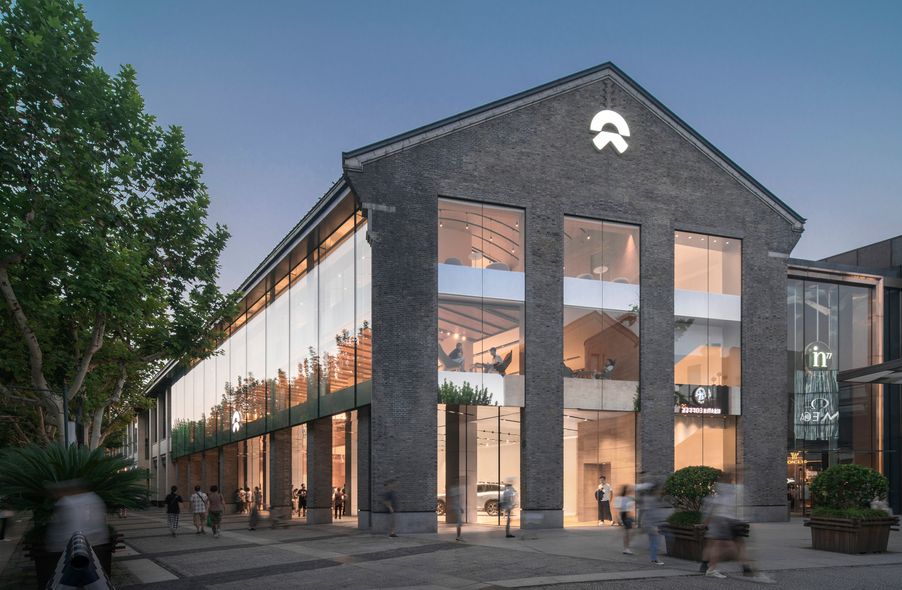When it comes to consumers and their purchasing methods, processes and experiences have changed significantly. The days when a customer visits multiple stores to find a good deal are essentially over. Brands have to be innovative and appeal to customers looking for the next new thing, and the opportunity for a more creative, comprehensive, and richer retail experience in today’s market is what helps generate excitement.
There are many benefits to a more stimulating retail experience and creating exposure to a new audience. Pushing boundaries instead of staying with standard messaging and maintaining a traditional client base can be the key to wider outreach. Unique and “unconventional” ways to communicate may be the path to reach out to potential new customers. It’s not about direct sales any more, but a lifestyle-centric approach where the retailer and consumer intersect to improve busy lives.
For example, Sharp and Samsung are evolving their standalone appliances to create a connected experience at home. Both companies have teamed up with retail partners and third-party solution providers to create advancements in the kitchen.

A more imaginative retail experience is about engaging the retail outlet’s community. One way to do this is to provide exclusive benefits to boost engagement. For example, this can be done by creating “immersive experiences” for the community and the potential buyers/users. Another is to focus on vital emotions and brand values to create “fans” using common denominators, such as certain passions, like the environment, next-generation technology, or belonging to a “family” of like-minded individuals.
Best Buy’s Teen Tech Centers, such as the one in St. Louis, offered a digital art class. The class taught students how to use digital tools and develop skills. Local students also were able to use the Tech Center’s professional-grade recording studio to learn how to record and edit tracks.
We at NIO have expanded the premium electric vehicle (EV) retail experience that can potentially work and resonate across other retail categories. Creativity is key to staying ahead of the game. Developing mutually beneficial partnerships, which could be unconventional ones, can help expand reach, create buzz and exposure to new ideas and initiatives, increase share resources, bring operational and functional improvements, and help enhance the user experience. For example, NIO Life is NIO’s extension of an enjoyable lifestyle: a cross-sectional lifestyle brand working with more than 500 designers worldwide to introduce products into a user’s daily life.
Some brands in the EV market have already created an “image” and messaging that has resonated with earlier customers but may not have evolved in recent years. As a result, the established car-buying consumer and a first-time car buyer, who was not even considering an electric vehicle, can be compelled by these communications or unique partnerships to re-think their decision. The same can be applied to other industries and markets across retail.
When it comes to the EV market, the more imaginative new retail experience also includes understanding how the buyer can benefit from owning an electric vehicle, from learning about EVs and their impact on the environment to long-term financial benefits and overall comfort and technology. Therefore, the user experience from the get-go should be a premium one. After all, EV ownership is more of a lifestyle than just merely owning a vehicle.
NIO provides an environment beyond the regular showroom or temporary experience center with their NIO House as a “user enterprise.” Making the user experience more immersive and pleasurable is a top priority by providing community spaces where visitors, from current NIO car owners to community members, can relax, recharge, and share. The byproduct, of course, is hoping that the consumer connects and experiences the cars while in the NIO House.

A non-traditional showcase space aims to make current and potential customers feel at home and undergo the manufacturer’s experience. The retail space is no longer a place to push sales, but for feeling and familiarity with what the brand can bring. These spaces include cafes with signature drinks, libraries, conference rooms, lounges, and childcare services. If nothing else, these unique showrooms and experience centers give manufacturers and the retailer control over a shopping experience separate from a traditional, hard sell.
Car manufacturers, such as Audi, Cadillac, Mercedes, Lexus, BMW, Hyundai’s luxury sub-brand Genesis, and NIO are already leaping and forging a deeper relationship with their current customers and potential new ones beyond the purchasing of a vehicle. As a result, consumers are being enticed into “brand experience centers” to check out the latest manufacturers’ latest vehicles without the hard sell of a showroom or car lot. For example, manufacturers have created temporary “pop-up” locations that include theaters, galleries, teahouses, cafés, and even fully operational restaurants to conduct outreach to potential new customers. Other experience centers have showcase spaces for higher-end car models to galleries that revolve around classic and contemporary vehicles from a brand, all to help change the consumer perception.
A retail experience can also be made “smarter” when accompanied by an app, and the EV retail industry is no different. A specific app can provide a premium and unique user experience for the potential buyer and the actual customer. As a result, many companies have started investing more in the mobile experience. For example, NIO has developed a unique app where users can schedule a test drive, customize, purchase a vehicle, chat online with other users and employees about their experiences, request service or services, request power replenishment services, or even purchase branded services merchandise.
An intelligent retail experience allows users to engage with others, enjoy their purchases, find insights, explore activities to do, and share moments and joy. With the inclusion of apps, users can conveniently connect an app to their vehicle for one-step services while staying connected with news shared by users and even employees and executives. It can be a social platform for users (both potential and actual customers) to communicate.















